- Home
- Sebastian Junger
Fire Page 17
Fire Read online
Page 17
I have only once been in a situation where everything depended on me—my own version of Colter’s run. It’s a ludicrous comparison except that for the age that I was, the stakes seemed every bit as high. When I was eleven, I went skiing for a week with a group of boys my age, and late one afternoon when we had nothing to do, we walked off into the pine forests around the resort. The snow was very deep, up to our waists in places, and we wallowed through slowly, taking turns breaking trail. After about half an hour, and deep into the woods now, we crested a hill and saw a small road down below us. We waited a few minutes, and sure enough, a car went by. We all threw snowballs at it. A few minutes later another one went by, and we let loose another volley.
Our snowballs weren’t hitting their mark, so we worked our way down closer to the road and put together some really dense, heavy iceballs—ones that would throw like a baseball and hit just as hard. Then we waited, the woods getting darker and darker, and finally in the distance we heard the heavy whine of an eighteen-wheeler downshifting on a hill. A minute later it barreled around the turn, and at the last moment we all heaved our iceballs. Five or six big white splats blossomed on the windshield. That was followed by the ghastly yelp of an air brake.
It was a dangerous thing to do, of course: The driver was taking an icy road very fast, and the explosion of snow against his windshield must have made him jump right out of his skin. We didn’t think of that, though; we just watched in puzzlement as the truck bucked to a stop. And then the driver’s side door flew open and a man jumped out. And everyone started to run.
I don’t know why he picked me, but he did. My friends scattered into the forest, no one saying a word, and when I looked back, the man was after me. He was so angry that strange grunts were coming out of him. I had never seen an adult that enraged. I ran harder and harder, but to my amazement, he just kept coming. We were all alone in the forest now, way out of earshot of my friends; it was just a race between him and me. I knew I couldn’t afford to lose it; the man was too crazy, too determined, and there was no one around to intervene. I was on my own. Adventura—what must happen will happen.
Before I knew it, the man had drawn to within a few steps of me. Neither of us said a word; we just wallowed on through the snow, each engaged in our private agonies. It was a slow-motion race with unimaginable consequences. We struggled on for what seemed like miles but in reality was probably only a few hundred yards; the deep snow made it seem farther. In the end I outlasted him. He was a strong man, but he spent his days behind the wheel of a truck—smoking, no doubt—and he was no match for a terrified kid. With a groan of disgust he finally stopped and doubled over, swearing at me between breaths.
I kept running. I ran until his shouts had died out behind me and I couldn’t stand up anymore, and then I collapsed in the snow. It was completely dark and the only sounds were the heaving of the wind through the trees and the liquid slamming of my heart. I lay there until I was calm, and then I got up and slowly made my way back to the resort. It felt as if I’d been someplace very far away and had come back to a world of tremendous frivolity and innocence. It was all lit up, peals of laughter coming from the bar, adults hobbling back and forth in ski boots and brightly colored parkas. “I’ve just come back from some other place,” I thought. “I’ve just come back from some other place these people don’t even know exists.”
THE FORENSICS OF WAR
1999
Homo homini lupus. (Man is a wolf to man.)
—PLAUTUS, Asinaria
No one knows who he was, but he almost got away. He broke and ran when the Serbs started shooting, and he made it to a thicket before the first bullet hit him in the left leg. It must have missed the bone, because he was able to keep going—along the edge of a hayfield and then into another swath of scrub oak and locust. There was a dry streambed in there, and he probably crouched in the shadows, listening to the bursts of machine-gun fire and trying to figure out a way to escape. The thicket stretched uphill, along the hayfield, to a stand of pine trees, and from there it was all woods and fields leading to the Albanian border. It didn’t offer much of a chance, and he must have known that.
He tied a sweater around the wound in his thigh and waited. Maybe he was too badly hurt to keep moving, or maybe he didn’t dare because the Serbs were already along the edge of the field. Either way, they eventually spotted him and shot him in the chest, and he fell backward into the streambed. His killers took his shoes, and—months later, after the war ended—a fellow Albanian took his belt buckle and brought it to the authorities in Gjakovë. It was the only distinctive thing on him, and there was a chance that someone might recognize it.
I saw the dead man in late June, two weeks after NATO had taken Kosovo from the Serbs. It was a hot day, and my photographer and I stood peering at his corpse, in the same mottled shade that the man had tried to hide in. His skull was broken open, and his jawbone was a short distance away. The sweater was still tied around his leg. I had walked into the thicket braced for the worst, but he wasn’t particularly hard to look at. He’d been killed two months earlier—on April 27, around midday—and he looked less like a person than a tipped-over hatrack draped in blue jeans and a cheap parka. The young man who had led us there leaned on a shepherd’s crook and told us that the dead man was in his early twenties and had probably come from a nearby village. The Serbs had swept the valley from Junik to Gjakovë in retaliation for an attack by the Kosovo Liberation Army, which for two years has fought for independence for Kosovo. They’d taken the men from more than half a dozen little villages and gunned them down in a field outside Meja. Then they came back in the middle of the night to bury them. They missed a few.
The shepherd identified himself as Bashkim; he was a handsome blond kid with a wispy goatee and a shy smile that never left his face. “They came at five A.M.—not shooting, just yelling,” Bashkim said. “They made two hundred people lie down against a compost heap, piled cornhusks on them, and then machine-gunned them. Then they set them on fire…. It was local militia from Gjakovë. They were wearing green camouflage and black ski masks. One of them was called Stari; all the women saw him. They recognized him from Gypsy Road, about five kilometers from here.”
Meja was just a scattering of tile-roofed farmhouses along a dirt road in the middle of a broad agricultural valley. Wheat and hayfields gave way to brush-covered hills and then the Koritnik Mountains, which run along the Albanian border. Bashkim had escaped the roundup of men in the valley because he was in an isolated house that the Serbs missed. While telling the story, he seemed undisturbed by the massacres, his own close call, or even the body at his feet. He just kept smiling and smoking the American cigarettes we offered him. After twenty minutes or so, he led us back into the hot sun of the hayfield and past the compost heap where the men had been shot. There was a human leg in the grass, and then another leg, and then more remains in a ditch. They were harder to identify. Stuck into the compost heap was an old umbrella. “Why is that there?” I asked.
“It was found near one of the bodies,” Bashkim said. “Maybe someone will recognize it and know who he was.”
The worst of the violence didn’t come to southwestern Kosovo until the evening of March 24, when NATO jets streaked overhead on their way to bomb command and control targets in Serbia. Within hours Serb special police, soldiers, and hastily deputized militia units were walking through the streets of nearby Gjakovë, pumping incendiary rounds, known locally as butterflies, into houses and storefronts in the Albanian part of town. When the buildings finished burning, the Serbs knocked the walls over with bulldozers and then used Gypsies to clear the rubble from the streets so that they were passable for tanks. Anyone who stood around and watched was shot.
There was little the KLA could do but hide in the hills and wait for it to be over. In two years of fighting, the KLA never won a battle or held a town for long, but it did know how to ambush. And in mid-April, just outside Meja, it pulled off an ambush that would bring
the full wrath of the Serbs down on the valley.
Its target was a Serb commander named Milotin Prasović, who was particularly loathed by the local Albanians. A week or so earlier, Prasović had driven through Meja warning the residents that he was going to return to collect all the weapons in town, and if there weren’t any for him, he’d burn their houses down. True to his word, he came back in a brick-red Audi filled with police. They drove through town, shot into the air, turned around, and drove straight into a KLA ambush. The first rocket-propelled grenade blew the right rear door off. That was followed by another round and sheets of automatic-weapons fire. Everyone in the car was killed except for Prasović, who managed to dive out of his seat and start shooting back from the edge of the road. It was over within seconds; the KLA shot him down from their hiding place and then retreated into the hills above town.
The retaliation, when it came, was swift and implacable. Shortly before dawn on April 27, according to locals, a large contingent of Yugoslav troops garrisoned in Junik started moving eastward through the valley, dragging men from their houses and pushing them into trucks. “Go to Albania!” they screamed at the women before driving on to the next town with their prisoners. By the time they got to Meja they had collected as many as three hundred men. The regular army took up positions around the town while the militia and paramilitaries went through the houses grabbing the last few villagers and shoving them out into the road. The men were surrounded by fields most of them had worked in their whole lives, and they could look up and see mountains they’d admired since they were children. Around noon the first group was led to the compost heap, gunned down, and burned under piles of cornhusks. A few minutes later a group of about seventy were forced to lie down in three neat rows and were machine-gunned in the back. The rest—about thirty-five men—were taken to a farmhouse along the Gjakovë road, pushed into one of the rooms, and then shot through the windows at point-blank range. The militiamen who did this then stepped inside, finished them off with shots to the head, and burned the house down. They walked away singing.
By conservative estimates, the Serbs killed at least ten thousand people in Kosovo. There are so many bodies—both human and animal—lying around the countryside that much of the rural water supply is contaminated. There are parts of Kosovo where not one village has been spared, and there are villages where not one house has been left standing. In the Decani district, bodies have been dumped in the wells of thirty-nine of forty-four villages surveyed. When NATO tanks rumbled into Kosovo on June 12, they found a level of destruction that hadn’t been seen in Europe since World War II.
The first big massacre occurred in March 1998, when Serb forces surrounded the village of Prekaz and wiped out fifty-eight civilians, many of them women and children. The attack was in retaliation for a shoot-out between KLA and Serb police a couple of weeks earlier, and it was the beginning of a horrible symbiosis between the two forces. Every time the KLA carried out a guerrilla attack, Serb forces would destroy the nearest village and massacre as many of the inhabitants as they could. And every time the Serbs massacred people in a village, more grief-stricken survivors joined the KLA. “For every massacre Serbs commit, we get twenty more recruits,” one KLA commander told a journalist friend of mine a few weeks before the NATO bombings started.
Ethically there’s an extremely thin line between ambushing Serb forces and deliberately provoking Serbs into massacring civilians, but the strategy worked. Around 8:00 P.M. on March 24, the first NATO warplanes struck targets deep within Serbia. And two months later, on May 24—just as the first sketchy peace agreements were being explored with Belgrade—the Hague war crimes tribunal indicted Slobodan Milošević and 4 other government and military leaders. The indictment was based on eyewitness accounts of massacres that took place between January and April 1999 in the villages of Racak, Krushe e Mahde, Krushe e Vogel, Bellacerka, Izbica, and Padalishte; the indictment listed, by name, more than 340 ethnic Albanians who had been killed. Within days of NATO’s arrival in Priština, war crimes investigators donated by many NATO countries were sifting through the mass graves named in the indictments, gathering evidence.
The crimes that Milošević and his compatriots were charged with fall under the Geneva Conventions of 1949, which were a direct outgrowth of the post–World War II Nuremberg trials. When the Germans surrendered on May 7, 1945, the Allies were suddenly faced with an unprecedented problem: They had in their custody Nazi officials who had started a war in which nearly fifty million people had been killed. Many of the dead had been exterminated in concentration camps, and the question was: What kind of justice should be brought to bear on the men who carried out such slaughter? The British initially suggested that the hundred or so main German culprits simply be taken out into the woods and shot (an idea embraced by Joseph Stalin, who jokingly—or maybe not—proposed upping the number to fifty thousand). Ultimately, though, due process prevailed. The accused would be given trials, which “they, in the days of their pomp and power, never gave to any man,” as the chief American prosecutor, Robert Jackson, put it. The trial would be open and fair, conducted in both English and German, and the accused would be represented by lawyers who would call their own witnesses and cross-examine others.
As idealistic as it was, the idea had inherent flaws. First, it was, by definition, a victor’s justice, and there was no suggestion that the victors would ever face the same scrutiny as the vanquished. The Soviets, for example, had invaded and occupied eastern Poland in 1939, in close cooperation with the Nazis; they massacred thousands of Polish officers and buried their bodies in the Katyn Forest. The Allies had fire-bombed Dresden, killing several hundred thousand civilians, and the Americans had fire-bombed Tokyo and then dropped nuclear bombs on Hiroshima and Nagasaki. These were all direct attacks on civilians—and therefore clear violations of international law—but they would never make it to the docket at Nuremberg.
Second, the Nazis were charged with, among other things, crimes against humanity, which include crimes committed by a government against its own people. At the start of World War II the law didn’t exist, and because the Holocaust was completely legal under German law, the perpetrators had technically never committed a crime. To charge them ex post facto was illegal and would never have stood up in a regular judicial proceeding.
These objections amounted to legal parlor games, however; the reality was that the Nuremberg trials were about as fair as things ever get in wartime. Out of the twenty-two Nazi leaders who were tried, twelve were sentenced to hang—including Reichsmarschall Hermann Göring, who swallowed a cyanide pill shortly before his execution; seven were sentenced to long prison terms; and three were acquitted. Three years later, the legal principles used in the trials were codified as the four Geneva Conventions and the Genocide Convention. Along with the Additional Protocols of 1977, they form the basis today of international war crimes trials. Because they are rooted in something called customary international law, which flows from norms evolved over centuries, rather than from treaties, the conventions are binding even on nations that have not signed them. A state, in other words, cannot exclude itself from the constraints of customary law any more than an individual can.
The indictments announced in The Hague on May 27 charged Yugoslav President Slobodan Milošević, Serb President Milan Milutinović, Deputy Prime Minister Nikola Sainović, Chief of Staff Dragoljub Ojdanić, and Serb Minister of Internal Affairs Vlajko Stojilković with three counts each of crimes against humanity and one count each of violation of the laws and customs of war. Copies of the arrest warrants were sent to all member states of the United Nations and the Yugoslav minister of justice; UN member states were asked to freeze the assets of the accused. The announcement of the indictments was delayed until representatives from international agencies could safely leave the former Yugoslavia, and eyewitnesses wouldn’t be identified until the accused were arrested. They could then be properly sheltered from threat and intimidation.
Of th
e two charges, violation of the laws and customs of war is the older and more traditional. It attempts to reconcile human suffering with the need of an army to defeat its enemy. Although constraints on wartime behavior date back to ancient Hindu and Greek law, the first European wasn’t tried in a civilian court until the late fifteenth century, when an Austrian nobleman named Peter von Hagenbach was sentenced to death for atrocities committed under his command. A hundred and fifty years later a Dutch lawyer named Hugo Grotius wrote The Law of War and Peace, which is considered the foundation of modern humanitarian law. “Throughout the Christian world…I observed a lack of restraint in relation to war, such as even barbarous races would be ashamed of,” Grotius wrote. “[A] remedy must be found…that men may not believe either that nothing is allowable, or that everything is.”
Modern laws and customs of war are direct descendants of Grotius’s work. In essence, these laws acknowledge that death and suffering are inevitable in armed conflict, but that deliberately inflicting unnecessary suffering is a criminal act for which individuals can be held accountable. If you shell a military base and happen to kill civilians, you have not committed a war crime; if you deliberately target cities and towns, you have. Killing prisoners, civilians, or hostages is a war crime, as are enslavement of civilians, deportation, plunder, wanton destruction, and “extensive destruction not justified by military necessity.”

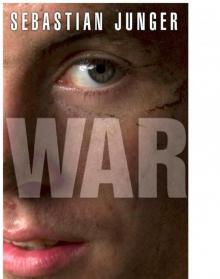 War
War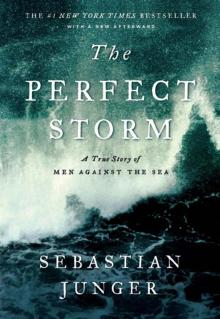 The Perfect Storm: A True Story of Men Against the Sea
The Perfect Storm: A True Story of Men Against the Sea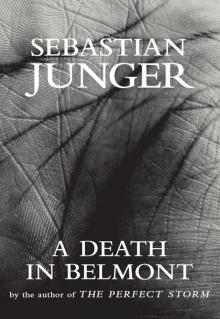 A Death in Belmont
A Death in Belmont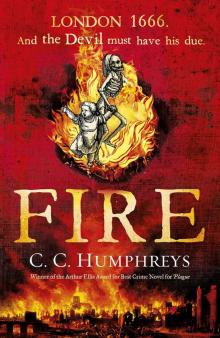 Fire
Fire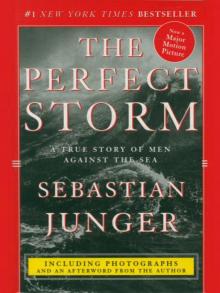 The Perfect Storm
The Perfect Storm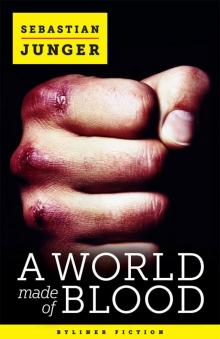 A World Made of Blood (Kindle Single)
A World Made of Blood (Kindle Single)